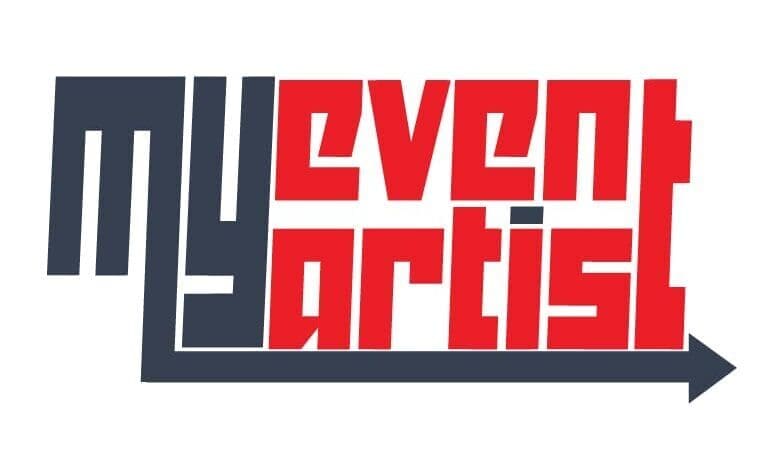When designing a sports logo, creating a visually appealing and dynamic image is crucial for capturing the spirit and excitement of the game. One of the most effective techniques for enhancing your logo’s visual impact is to incorporate gradients. Gradients can add depth, dimension, and richness to your designs, helping your logos stand out in a competitive landscape.
At My Event Artist, we are committed to helping event organizers, sports teams, and apparel businesses create striking logos that resonate with their audience. This blog post will guide you through using the Gradient Tool in Adobe Illustrator to add depth and dimension to your sports logo design.
Understanding the Importance of Gradients
1. Enhancing Visual Interest
Gradients can transform flat designs into three-dimensional visuals by adding subtle transitions between colors. This approach can make logos more engaging and attractive to viewers.
2. Creating Depth and Dimension
Using gradients creates a sense of depth in your design, making elements appear as though they’re emerging from the background or receding from the foreground. This effect can make your logo appear more polished and professional.
3. Establishing Brand Personality
Different color gradients can communicate distinct moods and themes. Warm colors can convey energy and enthusiasm, while cooler colors can evoke calmness and professionalism. Choosing the right gradient can amplify your brand message.
Step-by-Step Guide to Using the Gradient Tool in Illustrator
Step 1: Setting Up Your Document
Before you start adding gradients to your sports logo, you need to set up your document in Adobe Illustrator:
- Open Adobe Illustrator: Launch the program on your computer.
- Create a New Document: Go to File > New and set your artboard size. For logos, a square canvas (e.g., 1000 x 1000 pixels) is often ideal.
- Open the Gradient Panel: Navigate to Window > Gradient to display the Gradient panel, which is essential for applying and customizing gradients.
Step 2: Create Your Logo Design
If you haven’t created your sports logo yet, now is the time to design it. Here are some tips:
- Use Basic Shapes: Start by using basic shapes (rectangles, circles, polygons) to outline your logo. Employ the Pen Tool (P) for more intricate designs.
- Finalize Your Design: Complete your logo’s overall layout, ensuring that all design elements are in place before adding gradients. This foundation will guide your gradient application.
Step 3: Selecting the Gradient Tool
Once your logo is designed, you can begin applying gradients:
- Select the Object: Use the Selection Tool (V) to select the object or shape within your logo that you want to apply a gradient to.
- Choose the Gradient Tool: Press G on your keyboard or select the Gradient Tool from the toolbar.
Step 4: Applying a Basic Gradient
Now you can apply a basic gradient to your selected object:
- Open the Gradient Panel: Make sure the Gradient panel is visible to view gradient options and settings.
- Apply the Default Gradient: Click on the gradient bar in the Gradient panel to apply the default black-to-white gradient to your shape. Don’t worry! You’ll customize it shortly.
Step 5: Customizing Your Gradient
To create a more appealing and relevant gradient for your sports logo, you’ll want to customize it:
- Choose Colors:
- Click on the gradient bar within the Gradient panel to access the gradient stop options.
- Select a gradient stop (small color square) below the bar to change its color by clicking on the Color Picker.
- Adding Gradient Stops:
- To add new color stops, click just below the gradient bar in the Gradient panel. This action allows you to blend in additional colors.
- Adjusting Stops:
- Drag the gradient stops to adjust the placement and blend of colors within your gradient.
- Move stops closer together for a more abrupt transition or further apart for a smoother blend.
- Direction of the Gradient:
- To adjust the angle of the gradient, hover over your shape and click and drag with the Gradient Tool. This action lets you visually change how the gradient flows in relation to the object.
Step 6: Experimenting with Gradient Types
Adobe Illustrator offers three main types of gradients: linear, radial, and freeform. Experimenting with these can enhance your logo design.
- Linear Gradient: This creates a smooth transition between colors along a straight line. Adjusting the angle can create various effects. This type is useful for representing movement and action in sports logos.
- Radial Gradient: A radial gradient transitions from a central point outward. This effect can create a three-dimensional look and draw attention to focal points in your logo.
- To apply a radial gradient, select “Radial Gradient” from the Gradient panel.
- Freeform Gradient: This newer Illustrator feature allows you to apply colors directly on points within the object, providing unprecedented control over color placement and transitions.
- To create a freeform gradient, click on the object, go to the Gradient panel, and select Freeform Gradient.
Step 7: Fine-Tuning the Gradient
Once you’ve added and customized your gradient, fine-tune its appearance:
- Adjust Opacity: You can change the opacity of individual gradient stops to create softer effects. This is beneficial for achieving a more refined look and feel.
- Overlay and Blend Modes: Use the Opacity settings and blending modes in the Transparency panel (Window > Transparency) to explore how the gradient interacts with underlying colors and shapes.
Step 8: Save Your Color Swatches
After finishing your gradient design:
- Create a Swatch: If you’ve applied a gradient you’re happy with, save it as a swatch for future use. Select your gradient in the Gradient panel and click the New Swatch icon at the bottom of the Swatches panel.
- Name Your Swatch: Give it a recognizable name, so you can easily identify it in future projects.
Best Practices for Using Gradients in Sports Logos
1. Maintain Simplicity
Overly complex gradients can distract from your logo’s message. Aim for simplicity and clarity, especially in designs that need to be recognizable at a distance.
2. Limit Color Variation
Using too many colors can lead to visual confusion. Stick with two to four colors for gradients to ensure coherence and strong branding.
3. Test Different Backgrounds
Before finalizing your logo, test how your gradient appears on different colored backgrounds. This step can reveal if the colors work harmoniously across various applications.
4. Consider Print Vs. Digital
Remember that gradients can appear differently in print than on digital screens. Always test your gradients in both contexts to ensure consistency.
5. Seek Feedback
Gathering feedback from peers or target audiences can provide insights into how your gradient choices are received. Adjust based on constructive criticism before finalizing your design.
Conclusion: Elevate Your Sports Logo with Gradients in Illustrator
Using the Gradient Tool effectively can transform a flat sports logo into a vibrant and engaging design that captures attention. With the techniques delineated in this guide, you are now equipped to add depth and character to your logos, making them more exciting and relevant to your audience.
At My Event Artist, we are passionate about helping sports teams, event organizers, and businesses create memorable logos that embody their spirit. Explore our extensive collection of print-ready vector logo designs, customizable fonts, and more by visiting My Event Artist Shop. If you’re interested in a custom logo design tailored specifically to your event, don’t hesitate to reach out today!
Keywords: gradient tool, Adobe Illustrator, sports logo design, color depth, graphic design, branding
#gradienttool, #AdobeIllustrator, #sportslogodesign, #colordepth, #graphicdesign, #branding





Leave a Reply